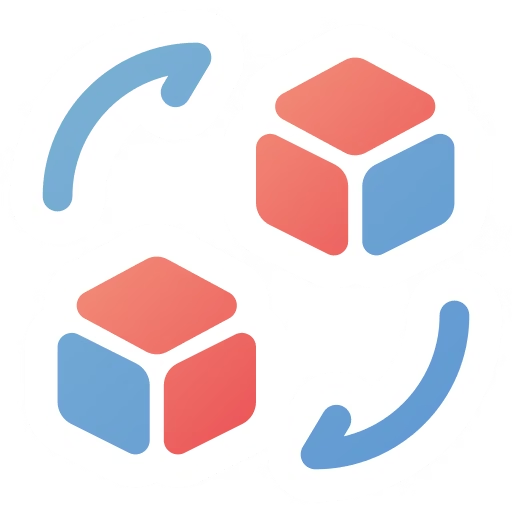🏥 Advanced BMI Visualizer & Calculator
Professional Body Mass Index calculator with visual insights and health recommendations
📊 Calculate Your BMI
📈 Track Progress
🎯 Your Results
🎯 Ideal Weight Range
Calculate BMI to see recommendations
💡 Health Recommendations
- Enter your details to get personalized recommendations
Free BMI Visualizer & Calculator: Calculate Body Mass Index with Health Insights
Want to understand your body mass index with interactive visual charts? Our free BMI visualizer provides instant, accurate BMI calculations with color-coded visual representations, ideal weight ranges, personalized health recommendations, and progress tracking. This BMI visualizer tool offers comprehensive insights into your health metrics with engaging visual displays.
What is BMI (Body Mass Index)?
📊 Understanding BMI
Medical Definition:
- Body Mass Index measures body fat based on height and weight
- Standardized metric used worldwide by healthcare professionals
- Screening tool for weight-related health risks
- Quick assessment of overall health status
BMI Formula:
- Metric: BMI = weight (kg) / [height (m)]²
- Imperial: BMI = [weight (lbs) / height (inches)²] × 703
- Simple calculation requires only height and weight
- Universal application works for most adults
🎯 Why BMI Matters
Health Implications:
- Disease risk assessment cardiovascular, diabetes, hypertension
- Health monitoring track changes over time
- Treatment planning weight management programs
- Insurance evaluations risk factor determination
- Fitness goals establish healthy targets
BMI Categories Explained
🟦 Underweight (BMI Below 18.5)
Health Concerns:
- Nutritional deficiencies inadequate nutrient intake
- Weakened immune system increased infection risk
- Bone density loss osteoporosis risk
- Fertility issues reproductive health impacts
- Fatigue and weakness low energy levels
Recommendations:
- Nutritionist consultation develop healthy eating plan
- Medical evaluation rule out underlying conditions
- Gradual weight gain 0.5-1 lb per week target
- Strength training build muscle mass
- Calorie-dense foods nuts, avocados, healthy fats
🟩 Normal Weight (BMI 18.5-24.9)
Optimal Health Range:
- Lowest disease risk healthy weight category
- Balanced body composition appropriate fat to muscle ratio
- Good energy levels efficient metabolism
- Cardiovascular health optimal heart function
- Longevity benefits associated with longer lifespan
Maintenance Tips:
- Balanced diet whole foods, lean proteins, vegetables
- Regular exercise 150 minutes moderate activity weekly
- Portion control mindful eating habits
- Hydration adequate water intake
- Sleep quality 7-9 hours nightly
🟨 Overweight (BMI 25-29.9)
Moderate Health Risks:
- Pre-diabetes risk elevated blood sugar levels
- High blood pressure cardiovascular strain
- Joint stress increased pressure on knees, hips
- Sleep apnea risk breathing difficulties
- Cholesterol issues lipid profile concerns
Action Steps:
- Caloric deficit reduce intake by 500 calories daily
- Increased activity add 30 minutes exercise daily
- Dietary changes reduce processed foods, sugar
- Professional guidance consider nutritionist support
- Realistic goals lose 1-2 lbs per week
🟧 Obesity Class I (BMI 30-34.9)
Significant Health Risks:
- Type 2 diabetes high likelihood development
- Heart disease major cardiovascular concerns
- Stroke risk increased cerebrovascular events
- Cancer risk higher rates certain cancers
- Chronic inflammation systemic health impacts
Medical Recommendations:
- Doctor consultation comprehensive health assessment
- Structured program supervised weight loss plan
- Medication consideration if lifestyle changes insufficient
- Comorbidity management address related conditions
- Support systems counseling, support groups
🟥 Obesity Class II & III (BMI 35+)
Severe Health Risks:
- Life-threatening conditions multiple organ systems affected
- Reduced life expectancy significant mortality risk
- Mobility limitations daily activity challenges
- Quality of life physical and emotional impacts
- Medical complications surgery risks, medication efficacy
Intensive Interventions:
- Medical supervision regular healthcare monitoring
- Bariatric surgery consideration for severe obesity
- Comprehensive programs multidisciplinary approach
- Mental health support address emotional factors
- Long-term management sustainable lifestyle changes
How to Use Our BMI Visualizer
Step 1: Enter Your Measurements
Height Input:
- Metric system: Centimeters (cm)
- Imperial system: Feet and inches
- Accurate measurement stand straight, no shoes
- Morning measurement most consistent results
Weight Input:
- Metric system: Kilograms (kg)
- Imperial system: Pounds (lbs)
- Consistent timing weigh same time daily
- Minimal clothing for accuracy
- Quality scale digital preferred
Step 2: Calculate Your BMI
Instant Visual Results:
- Automatic calculation no manual math required
- BMI number precise to decimal points
- Category classification underweight to obese
- Color-coded display easy visual understanding
- Health status immediate assessment
Step 3: View Visual Insights
Interactive BMI Visualizer Display:
- Ideal weight range healthy target zone
- Visual charts see where you fall on spectrum
- Health recommendations customized advice
- Risk assessment potential health concerns
- Progress tracking compare results over time
BMI Visualizer Features
📊 Interactive Visual BMI Chart
Graphical Representation: Our BMI visualizer displays color-coded zones for easy category identification. The visual BMI chart shows:
- Your position marked clearly on spectrum
- Range indicators show healthy zones
- Comparison view track progress over time
- Interactive display engaging visualization
- Easy interpretation understand results instantly
🎯 Ideal Weight Range Visualizer
Visual Healthy Weight Goals:
- Minimum weight lowest healthy BMI range
- Maximum weight highest healthy BMI range
- Target zone optimal health region visually displayed
- Realistic goals achievable objectives
- Personalized ranges based on your height
📈 Visual Progress Tracking
Monitor Your Journey Visually: The BMI visualizer lets you monitor your journey with:
- Historical data track changes over time
- Visual trend graphs see improvement patterns
- Milestone markers celebrate achievements
- Motivation boost visual progress confirmation
- Long-term tracking months or years displayed
💡 Personalized Health Recommendations
Visual Health Guidance:
- Diet suggestions nutrition improvements
- Exercise plans activity recommendations
- Lifestyle tips holistic health approach
- Medical advice when to consult professionals
- Visual indicators color-coded action items
BMI Visualizer vs Traditional Calculators
🎨 Visual Advantages
Why Our BMI Visualizer Stands Out:
- Color-coded results instant understanding
- Graphical displays easier comprehension than numbers
- Interactive charts engaging user experience
- Progress visualization see trends at a glance
- Motivational impact visual progress is powerful
Traditional Calculator Limitations:
- Numbers only abstract and less engaging
- No context difficult to interpret
- Limited tracking harder to see progress
- Less intuitive requires interpretation
- Lower engagement less memorable
BMI Limitations and Considerations
⚠️ What BMI Doesn’t Measure
Important Limitations:
- Muscle mass athletes may have high BMI but low body fat
- Body composition doesn’t distinguish fat from muscle
- Fat distribution visceral vs subcutaneous fat
- Bone density skeletal structure variations
- Age factors metabolism changes over time
Who BMI May Not Suit:
- Bodybuilders and athletes high muscle mass
- Elderly individuals muscle loss with age
- Pregnant women temporary weight changes
- Children and teens use pediatric BMI percentiles
- Certain ethnicities different health risk thresholds
🔍 Alternative Health Metrics
Complementary Measurements:
- Body fat percentage more accurate composition
- Waist circumference abdominal fat indicator
- Waist-to-hip ratio fat distribution assessment
- Body composition analysis detailed breakdown
- Metabolic health markers blood tests, blood pressure
BMI and Overall Health
🏃 Exercise Recommendations by BMI
Activity Guidelines:
Underweight:
- Strength training build muscle mass
- Moderate cardio avoid excessive calorie burn
- Resistance exercises weight-bearing activities
- Flexibility work yoga, stretching
- Gradual progression increase intensity slowly
Normal Weight:
- Balanced routine cardio and strength training
- 150 minutes weekly moderate-intensity exercise
- Variety prevent boredom, target different areas
- Consistency regular activity schedule
- Maintenance focus preserve healthy status
Overweight/Obese:
- Low-impact cardio walking, swimming, cycling
- Joint-friendly reduce injury risk
- Start slowly build endurance gradually
- Increase duration before increasing intensity
- Professional guidance consider personal trainer
🥗 Nutrition Guidance by Category
Dietary Recommendations:
Underweight:
- Calorie surplus consume more than you burn
- Nutrient-dense foods maximize nutritional value
- Healthy fats avocados, nuts, olive oil
- Protein-rich lean meats, legumes, dairy
- Frequent meals 5-6 smaller meals daily
Normal Weight:
- Balanced macros carbs, proteins, fats
- Whole foods minimize processed items
- Portion awareness mindful eating
- Hydration adequate water intake
- 80/20 rule healthy most of time, flexibility occasionally
Overweight/Obese:
- Caloric deficit reduce 500-750 calories daily
- High fiber vegetables, whole grains
- Lean proteins chicken, fish, plant-based
- Limited sugars reduce added sugars drastically
- Meal planning prepare healthy options
Medical Context and Professional Use
🏥 Clinical Applications
Healthcare Settings:
- Initial assessment patient health screening
- Treatment planning weight management programs
- Medication dosing body size considerations
- Surgical evaluation operative risk assessment
- Insurance requirements policy underwriting
Medical Protocols:
- Routine checkups annual physical exams
- Disease screening identify risk factors
- Treatment monitoring track intervention success
- Research studies population health data
- Public health community wellness initiatives
📋 Professional Guidelines
Medical Standards:
- WHO classifications according to World Health Organization guidelines
- CDC recommendations following CDC obesity guidelines
- Medical associations obesity medicine societies
- Clinical protocols evidence-based practices
- Research validation peer-reviewed studies
BMI Visualizer for Special Populations
👶 Children and Adolescents
Pediatric BMI:
- Percentile-based compared to same age/gender
- Growth patterns developmental considerations
- Doctor interpretation specialized assessment needed
- Not adult BMI different calculation method
- Regular monitoring track growth trajectories
👴 Elderly Adults
Senior Considerations:
- Muscle loss sarcopenia with aging
- Bone density osteoporosis factors
- Different thresholds adjusted healthy ranges
- Functional health mobility and independence
- Comprehensive assessment beyond BMI alone
🤰 Pregnant Women
Pregnancy BMI:
- Pre-pregnancy BMI baseline measurement
- Weight gain goals based on starting BMI
- Trimester tracking appropriate gain rates
- Postpartum assessment return to baseline
- Healthcare monitoring obstetric supervision
Global BMI Statistics and Trends
🌍 Worldwide Obesity Crisis
Alarming Statistics:
- 650 million adults obese worldwide according to WHO obesity data
- Triple increase since 1975
- 2.8 million deaths annually from overweight/obesity
- Economic impact billions in healthcare costs
- Preventable conditions lifestyle modifications effective
Regional Variations:
- United States 42% obesity rate
- Europe rising obesity trends
- Asia-Pacific increasing rates in urban areas
- Developing nations nutrition transition impacts
- Global concern WHO priority health issue
Understanding Visual BMI Results
🎯 How to Read Your BMI Visualizer Chart
Visual Interpretation Guide:
- Blue zone underweight category
- Green zone healthy weight range
- Yellow zone overweight category
- Orange zone obesity class I
- Red zone obesity class II and III
Your Position Marker:
- Exact location shows your current BMI
- Distance to goal visualize target zone
- Risk indicators color-coded alerts
- Improvement needed see gap clearly
- Achievement display celebrate when in green
Related Health Tools
Enhance your health journey with our other tools:
- Calorie Calculator – Track daily caloric needs
- Sleep Calculator – Optimize sleep for health
- Pregnancy Calculator – Prenatal health tracking
Frequently Asked Questions
Q: How is a BMI visualizer different from a regular BMI calculator? A: A BMI visualizer provides color-coded visual charts and graphs that make understanding your BMI easier and more engaging than simple number calculations.
Q: Is the BMI visualizer accurate? A: Yes, our BMI visualizer uses the same standard medical formula as healthcare professionals. The visual display adds context without changing accuracy.
Q: Can I track my progress with the BMI visualizer? A: Absolutely! Our BMI visualizer includes progress tracking features that show your BMI changes over time with visual trend graphs.
Q: What BMI is considered healthy on the visualizer? A: The green zone on our BMI visualizer represents healthy BMI (18.5-24.9), making it easy to see if you’re in the optimal range.
Q: Does the BMI visualizer work on mobile devices? A: Yes, our BMI visualizer is fully responsive and works perfectly on smartphones, tablets, and desktop computers with clear visual displays.
Q: How often should I use the BMI visualizer? A: Monthly checks are ideal for most people. The BMI visualizer’s progress tracking feature makes it easy to monitor trends over time.
💪 Try Our BMI Visualizer Now – Free Visual BMI Analysis with Health Insights!









